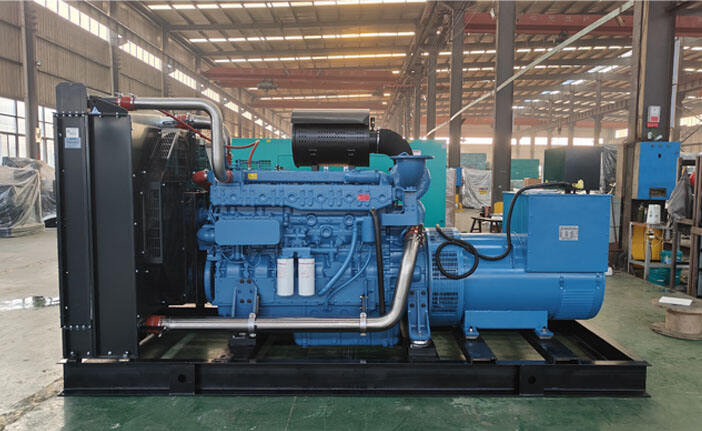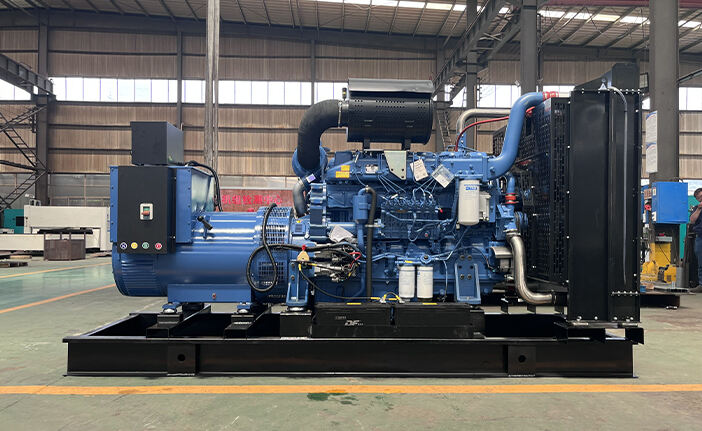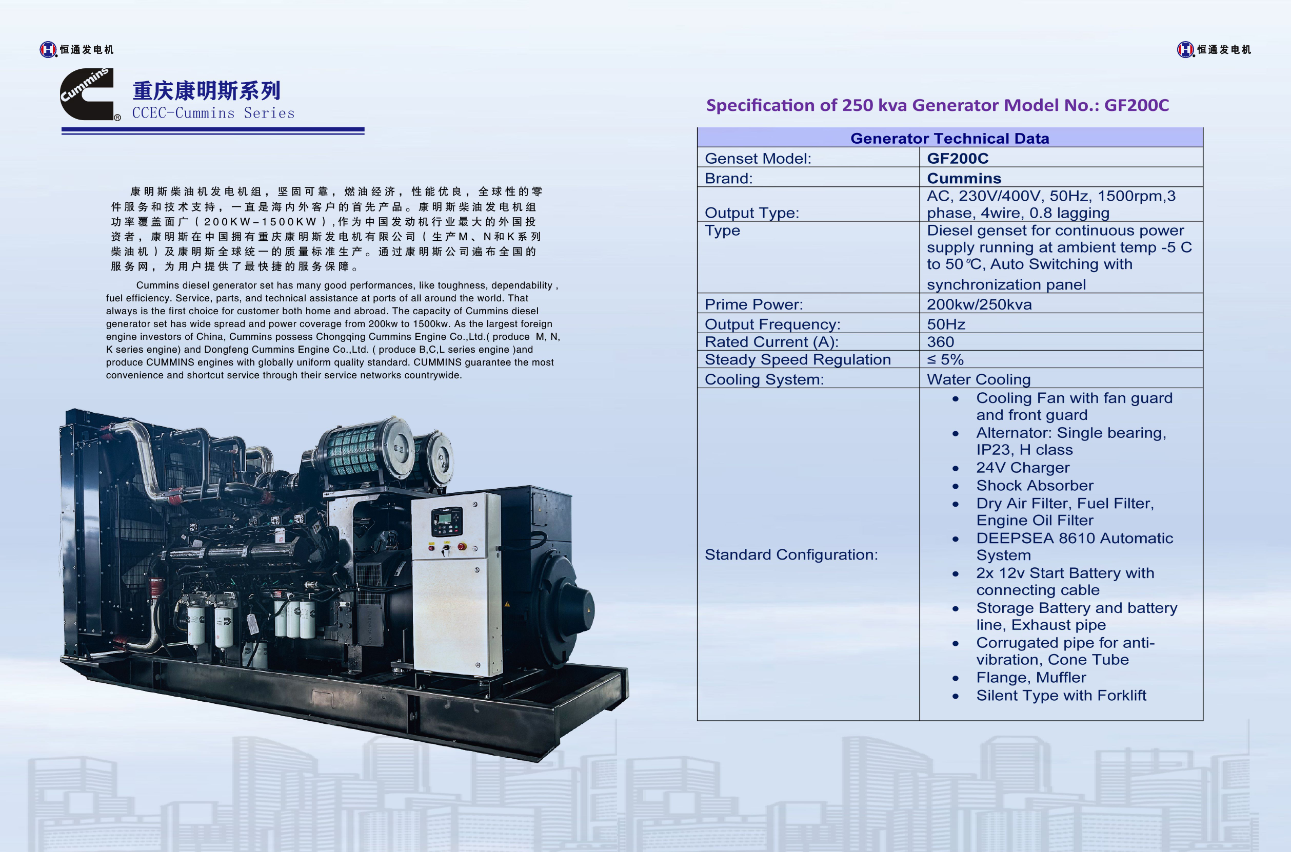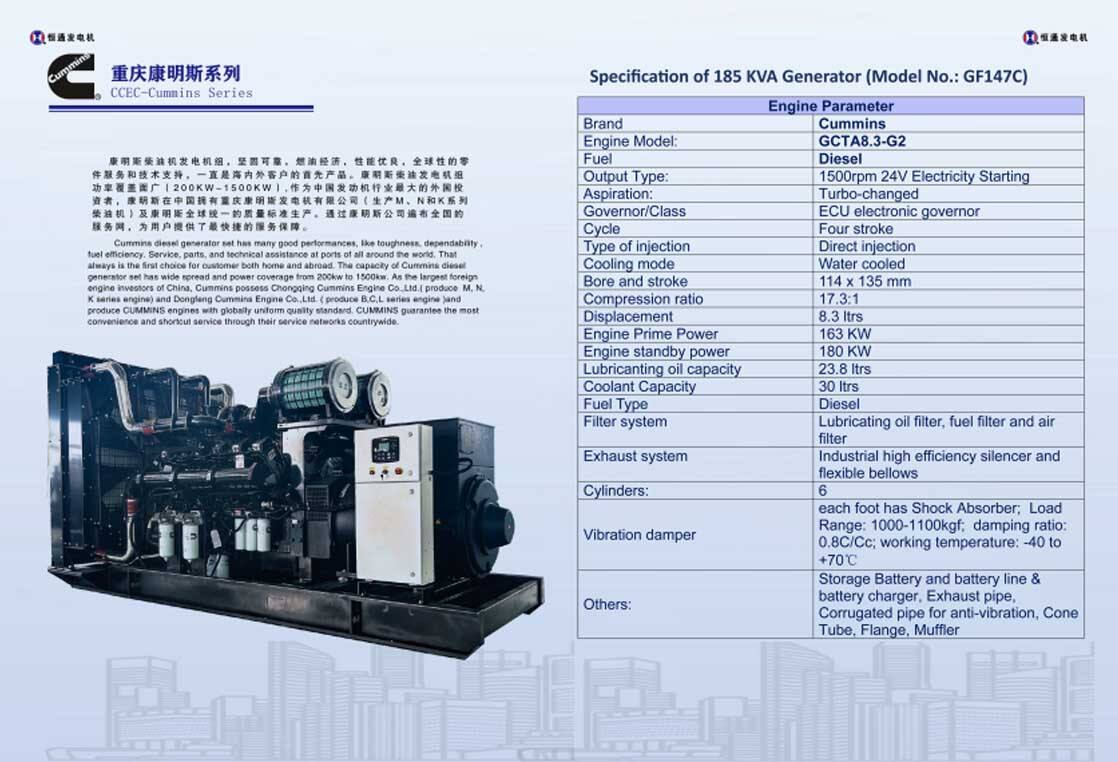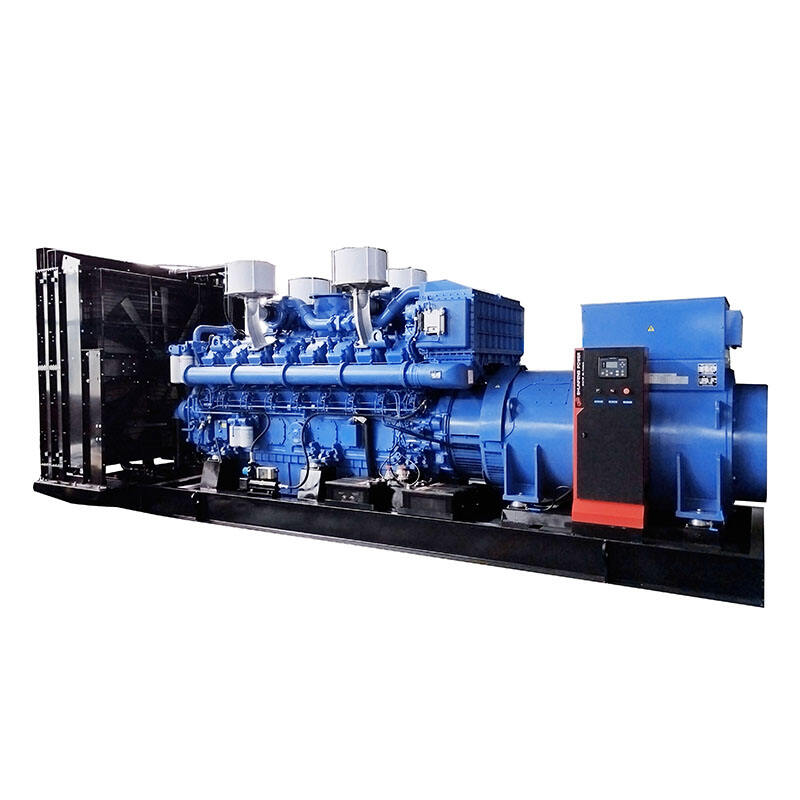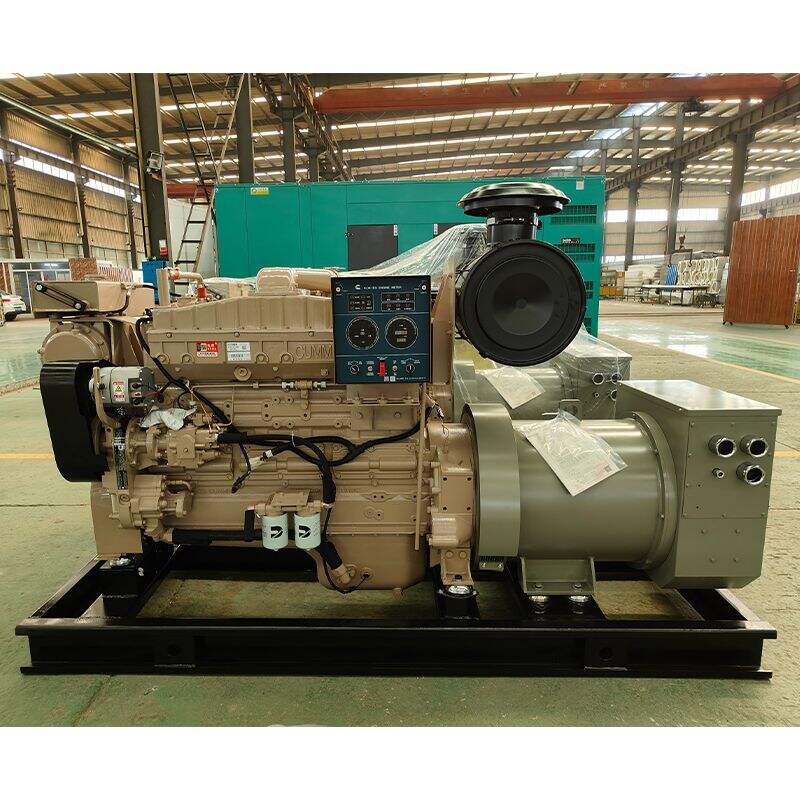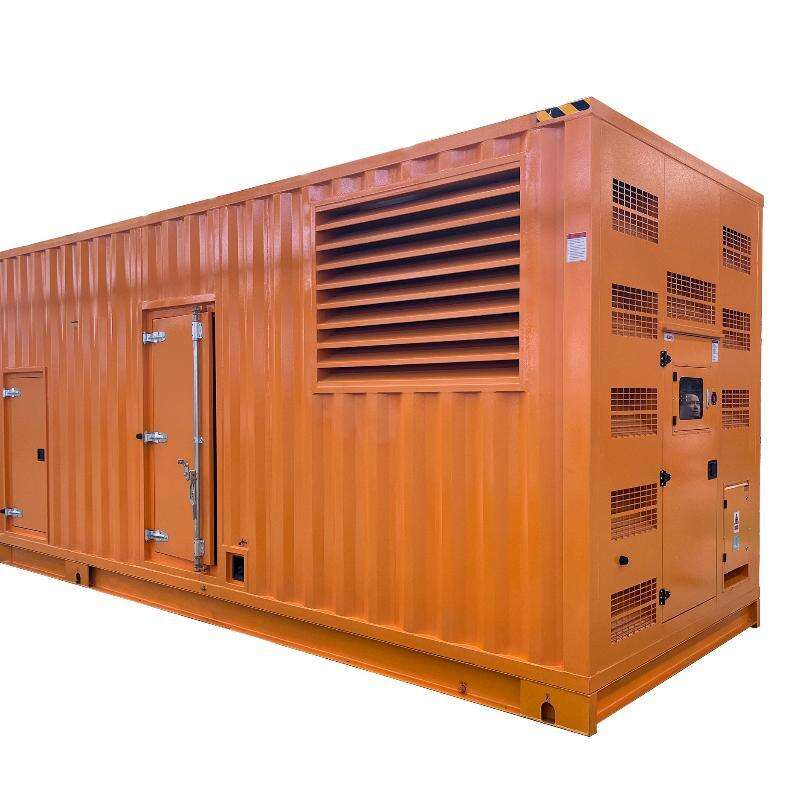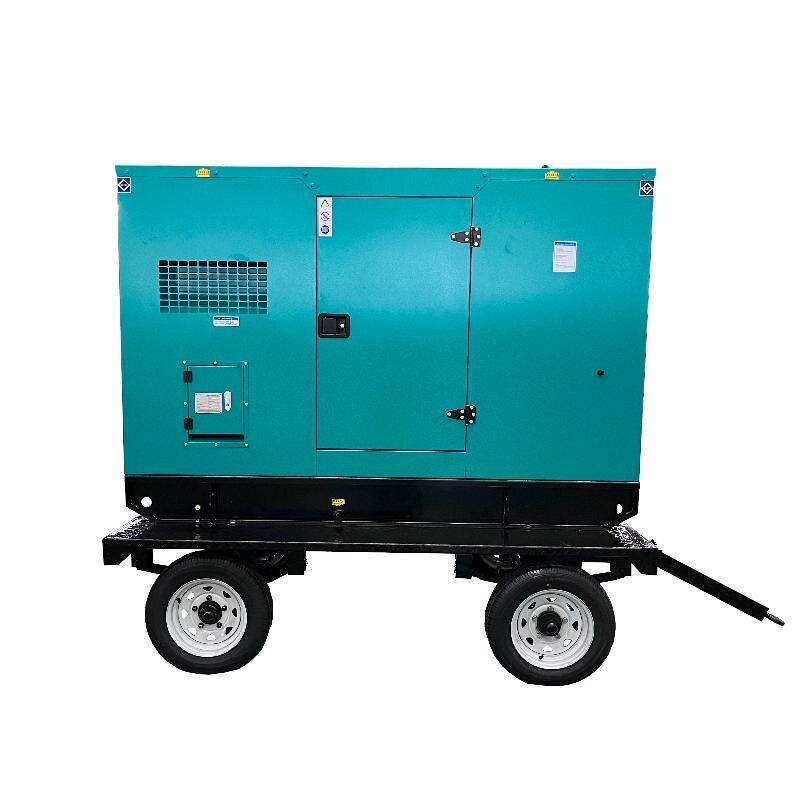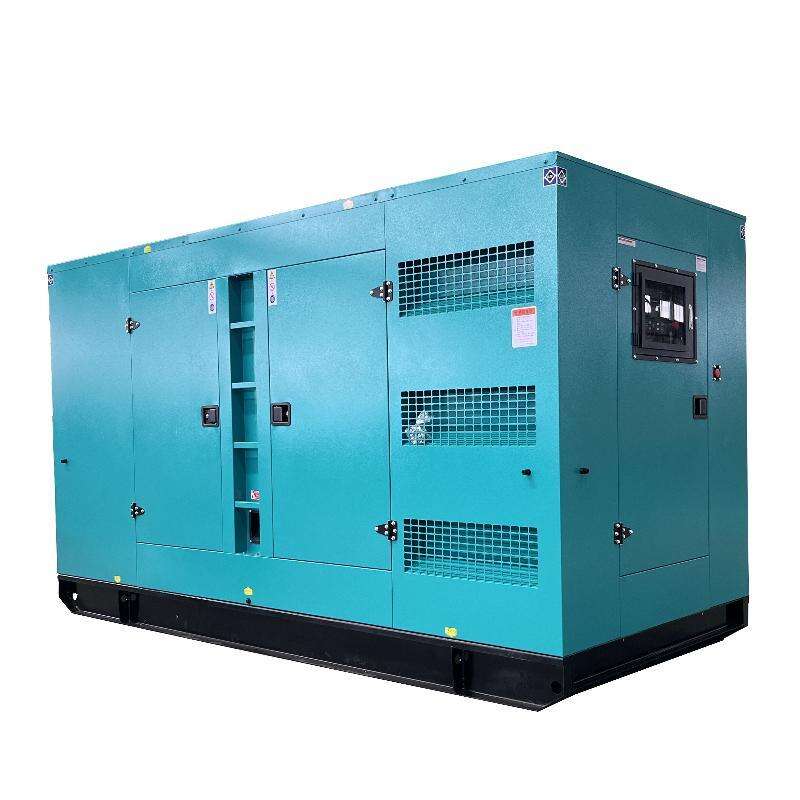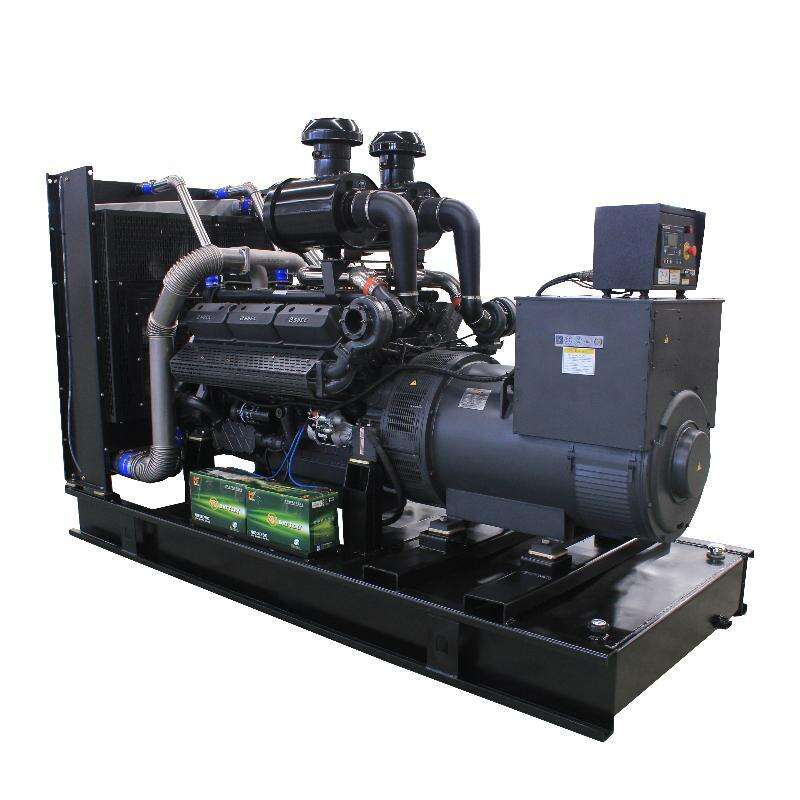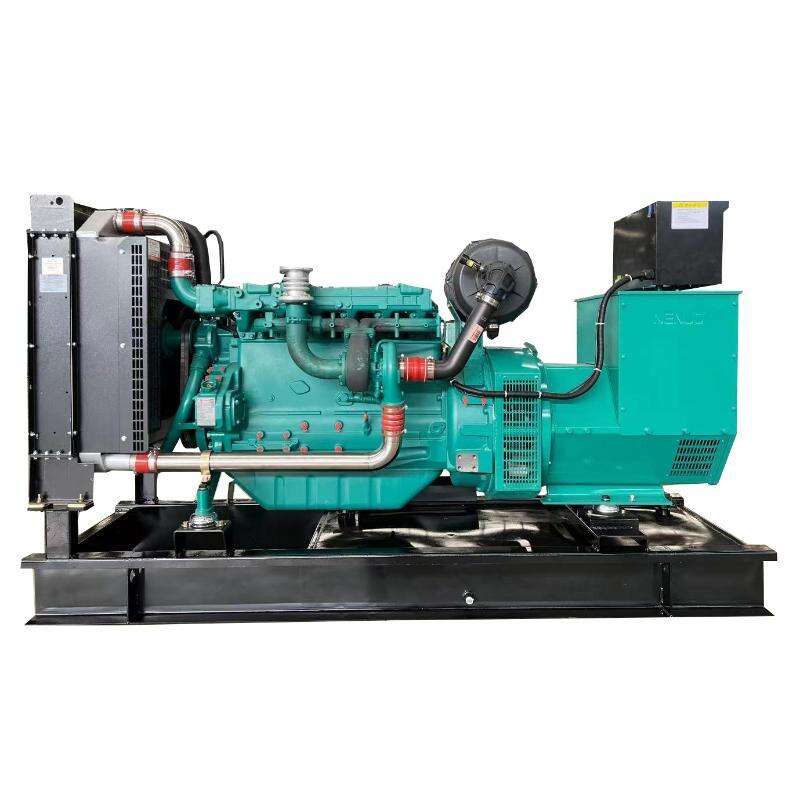Introduction to Cooling Forms of Diesel Generator Sets
What are the common cooling methods for diesel generator sets? The diesel generator set editor will take you to a detailed understanding of this issue.
1. Diesel generator manufacturer: air cooled.
Air cooling is a fan blowing method that uses cold air to blow through the stator and rotor of a diesel generator set, thereby achieving heat dissipation of the equipment. Cold air absorbs heat and turns into hot air. After the initial convergence of the breath between the stator and rotor, it is discharged through the air duct of the iron core and cooled by the cooling equipment. The cooled air is then fed into the generator by a fan for internal circulation to achieve heat dissipation. The method of air cooling is generally applicable to small and medium-sized synchronous diesel generator sets.
2. Diesel generator manufacturer: hydrogen cooling.
Hydrogen cooling is made by using hydrogen as the cooling medium, and its heat dissipation performance is superior to that of air. Most large steam turbine generator sets use hydrogen for cooling.
3. Diesel generator manufacturer: water-cooled.
The implementation of water cooling is achieved by using a stator and rotor dual water internal cooling method. The cold water of the stator water system flows through water pipes to the inlet rings installed on several stator seats, and then flows through insulated pipes to each coil. After absorbing heat, it is collected by insulated pipes and then collected into the outlet rings installed on the machine seat. Through this process, the external water system is discharged for cooling. Diesel generator manufacturers point out that due to the higher heat dissipation performance of water compared to air and hydrogen, water cooling is more widely used in modern industrial construction and is adopted by many large, medium, and type generator manufacturers in their generator sets.
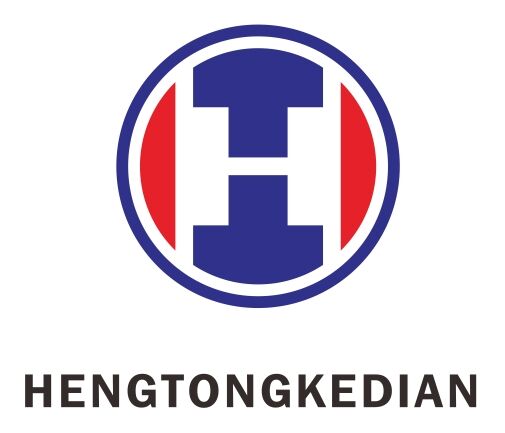
 EN
EN
 AR
AR
 BG
BG
 HR
HR
 CS
CS
 DA
DA
 NL
NL
 FI
FI
 FR
FR
 DE
DE
 EL
EL
 HI
HI
 IT
IT
 JA
JA
 KO
KO
 NO
NO
 PL
PL
 PT
PT
 RO
RO
 RU
RU
 ES
ES
 SV
SV
 TL
TL
 VI
VI
 TH
TH
 TR
TR
 GA
GA
 CY
CY
 BE
BE
 IS
IS

